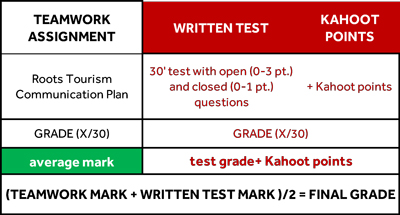Brand definitions and Brand Building Process
What is a brand
Understanding the structure of a brand: Kapferer’s Prism
The branding building process
Defining and positioning a brand
Mission, Vision, Values
Brand personality and the 5 J. Aakers dimensions
Competitors Analysis, PODs and POPs
Brand Drivers
The Brand Value Proposition
Brand identification System
What is a Brand Identification System
Which are the permanent identity elements
How to choose a brand name
How to choose a web domain name
What’s a tagline
Definitions of logo (wordmark, monogram and icon) and sound logo
What is a Corporate Identity Manual (or Brand Book or Brand Style Guide) and its components
Brand Choreography and POE
Brand Choreography definition and process (5 steps)
Buyer personas
Customer Journey & Touchpoints
Net Promoter Score and Loyalty
Paid, Owned & Earned Media
How to "earn" media
Communication objects in the customer journey and the roles of media
Media below-the-line
Events
Sponsorships
Product Placement
Branded Content
Influencer Marketing
The phases of an influencer marketing campaign
Advertising ATL
Media investments in Italy
Knowing each advertising media. What do we have to know about each media to plan them?
Internet audience data
The new media landscape: video, audio, text
Addressable TV
Video expressive capabilities
TV audience data in Italy (Auditel)
TV: 30" vs. other formats costs
Cinema as an advertising medium
Audimovie sold tickets data
Cinema media sellers
Radio audience data
Audio expressive capabilities
Press readership data
Why planning newspapers and Magazines?
Circulation data (ADS) and Audipress readership data
Out of Home main characteristics
Out Of Home: major categories of outdoor advertising
DOOH (Digital Out Of Home)
How to plan OOH
Cinema as an advertising medium
Audimovie sold tickets data
Cinema media sellers
Key media metrics
Impressions (gross and net contacts)Reach and rating points
Frequency and wear-out effect
GRP’s (& TRP’s)
C/GRP’s
Online media metrics:
Impressions and viewability
Clicks and CTR
Conversion Rate
Internet pricing models
Internet advertising
Internet and Social media users worldwide and in Italy
Audiweb
Display advertising and how to plan it
AdBlock
Native Advertising
Programmatic Advertising
Real Time Bidding
Programmatic platforms
Programmatic trading strategies: Programmatic Garanteed (or Automated Guaranteed) Preffered deal (or Unreserved Fixed Rate) Private Market Place (or Invitation-Only Auction) Open RTB (or Open Auction)
Facebook/Meta for Business
Meta Business dashboard
Meta for Business channels
Ad types
Meta for Business campaign process
The FB campaign structure (ad set…)
The targeting options
FB pricing policy
How to create an ad
Google Ads and Youtube ads
SEO and SEM (or SEA)
Google Search ads
Google Ads ad types
How to plan a Youtuve campaign
Youtube targeting options
Google quality score and the auction
Keywords matching options
Communication Budget
What is a communication budget
Empirical methods: what do we consider when preparing a Communication Budget?
Arbitrary allocation and inertia method
Affordability or Residual Amount method
Percentage of sales method
Objective and task method
Conversion funnel
Competitive parity budgeting
Allocation and scheduling of the communication costs
Media planning process
The 8 steps of the media planning process
The media briefing
What we want to know about the competitors’ planning strategies
Media goals setting
What it means to prepare a media strategy
Preparing the media plan
Media negotiation strategy
Post evaluation: what do we check?
Brand Management
Brand architecture and brand portfolio
The brand/product matrix: width & depth of the brand portfolio
Brand hierarchy
Brand architecture strategies (monolithic, house of brands, endorsed and sub-branding and Hybrid)
Brand extension strategies (diversification and line extensions). Pros & cons.
Co-branding strategies (product-based, communication-based and licencing)
Brand Value and Brand audit
What is Brand Equity and what resources create value for the brand
Why successful brands are important
What to measure to assess Brand Equity
The Brand Audit process and some assessment methodologies: BrandZ Pyramid by Millward Brown (WPP Group), Lovemarks by Saatchi&Saatchi, Brand Asset Valuator
